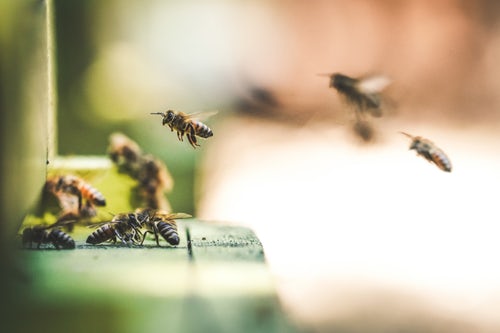
Honey bees are flying insects and the only surviving group of bees from the Apini tribe. They are found everywhere except in Antarctica continent.
1. The one and only
Bees are flying insects known for their role in pollination, producing honey and beeswax. Bees are the only insect in the world that makes food that we can eat.
2. Honey a day, keeps memory loss away
Honey contains ‘pinocembrin’ which is an antioxidant that improves brain function. Honey contains all of the substances needed to sustain life, including enzymes, water, minerals and vitamins.
3. So much yet so little
One bee can only make 1/12 of a teaspoon on honey in its entire life. It can take 1,100 bees to make 1kg of honey and they would have to visit 3-5 millions of flowers. A honey bee visits 50 to 100 flowers during a collection trip.
4. Old is gold
Bees have been around for more than 30 million years. They are pollinators for flowers, fruits and vegetables.
5.Tiny yet deadly
It has been estimated that it would take 1,100 bee stings to produce enough venom to be fatal. They die once they sting.
6.More the merrier
A colony of bees can contain between 20,000 and 60,000 bees, but only one queen bee. A worker honey bee is female, lives for about 6 weeks and does all the work. The male honey bees (also called drones), has no stinger and do only mating. In fact, when food becomes scarce, female honeybees usually force surviving males out of the nest.
7.Big Boss
The queen bee can live up to 5 years and it’s role is to fill the hive with eggs. She lays up to 2500 eggs per day in summer because the hive needs to be at its maximum strength. The queen bee has control over whether she lays male or female eggs. The queen produces chemicals that guide the behaviour of the other bees. When the queen bee dies, workers make a new queen by selecting a young larva and feed it a special food called ‘royal jelly’. This enables the larva to grow into a fertile queen.
8.My super powers
A honey bee can fly for up to six miles, and as fast as 15 miles per hour. Bees have two separate stomachs; one for food and another just for nectar. There are 900 cells in a bee’s brain. Bee’s brain has remarkable capacity to learn and remember things and is able to make complex calculations on distance travelled and foraging efficiency.
9.Smell Power
Each honey bee colony has a unique odour for members’ identification. This is so they can tell where they live. Honey bees have 170 odorant receptors which help for finding food. Their sense of smell is so precise that it could differentiate hundreds of different floral varieties and tell whether a flower carried pollen or nectar from metres away.
10.Dancing our way out
Honey bees communicate with one another by dancing. Honey bees perform a group of movements, called the “waggle dance talk.” They do this to inform other worker bees of the exact location of the food source.
11.Buzzing
Honey bees’ wings beat incredibly fast, about 200 beats per second. This way it makes their famous, distinctive buzz.
While bees can benefit the environment in many ways, it is inconvenient and possibly dangerous to let a bee hive thrive near your home. You can contact Pest Control Services for beehive removal.